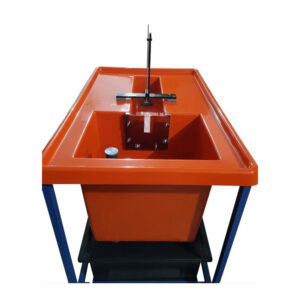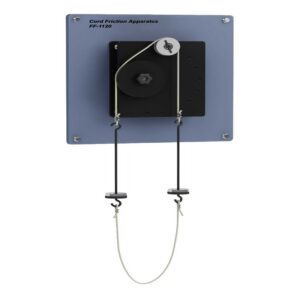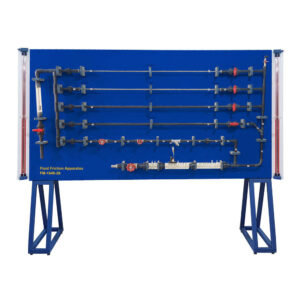Determination and analysis of the stability of floating bodies, such as ships, rafts, and pontoons, is important throughout many branches of engineering. This experiment allows students to determine the stability of a pontoon with its center of gravity at various heights. They can then compare this to predictions calculated from theory.
The experiment consists of a rectangular pontoon floating in water made of plastic. The pontoon has a plastic sail with five rows of slots. These rows are at equally spaced heights on the sail. The slots are equally spaced around the center line.
To change the center of gravity and the tilt (list) angle of the pontoon, students fit an adjustable weight into one of the slots. A plumb line from the top center and from the left side is used to measure the center of gravity of the floating body.
the scale with an indicator indicates the angle of a floating body. Students obtain fore and aft balance by positioning two small trim weights on the bottom of the pontoon.




